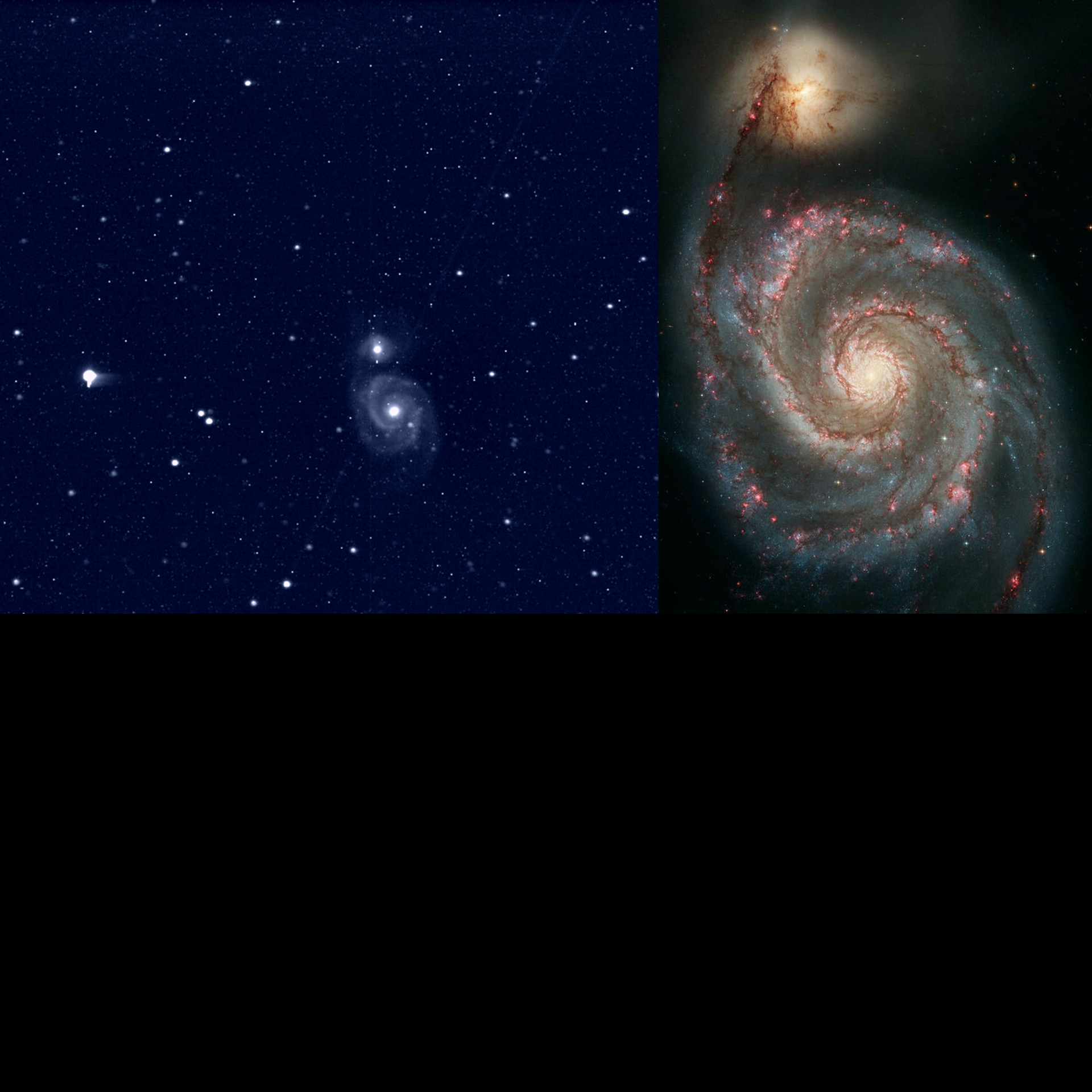MEvsNASA Image Contest
THE WHIRLPOOL GALAXY
THE ORION NEBULA

Most Compelling Processing
Daniella O.
"Similar colour scheme, and perpendicular to NASA's image. Much more minimalistic!"


Most Interesting Comparison
Tera L.
"Well it obvious I'm not quite as talented as whoever did this NASA photo but I am getting a lot better than when I started off. My Orion is a bit simple I'll admit but I feel that I have improved a lot so I think it's OK if I compare this photo to the NASA photo and say it pretty good."

THE CRAB NEBULA

Most Compelling Processing
Jamie T.
"The NASA image was taken in the infrared spectrum by the Spitzer's Infrared Array Camera. My image is in visible light and the Crab Nebula appears more in the red channel which is closer to the infrared."


Most Interesting Comparison
Leonardo S.
"Once I obtained the RGB image of the Crab Nebula, I decided to process it in false rainbow color in order to obtain the internal structure of the nebula. As in the NASA image, taken by Hubble Space Telescope, I was able to define different regions in the Crab Nebula which seem to correspond to the ones the scientists found thanks to the Hubble images. In particular I was able to detect the dense neutron region around the pulsar at the center of the nebula, that is visible in red in the center of my image. Furthermore, the orange and yellow colors in my image could correspond to the regions of the Crab Nebula where Hubble detected elements such as sulphur and oxygen. At the border of my image, the green colour may represent the edges of the nebula where hydrogen and energized oxigen were found by NASA scientists."

The MEvsNASA Challenge
Request and process your own image of the target object, using MicroObservatory's JS9 software. Then consider how your processed image compares to one of the Great Observatory images of the target object that have been processed by NASA.
What is happening to MEvsNASA?
Starting October 2018, we are retiring the MEvsNASA challenge. In its place, we have teamed up with NASA's Universe of Learning to start a new image processing challenge, known as NASA's Astrophoto Challenge.
If you have participated in the MEvsNASA challenge before, you should definitely try NASA's Astrophoto Challenge too. You will already know the main steps, and you just may be highlighted as one of the standout entries of this season's challenge!
How do I enter NASA's Astrophoto Challenge?
You can learn more information and submit your images through the NASA's Astrophoto Challenge website.

For 30 years, NASA has captured the mysteries of space from a fleet of telescopes orbiting Earth known as the Great Observatories. With MicroObservatory, you — yes, you! — have the remarkable opportunity to control telescopes, capture images, and explore the same mysteries alongside NASA.










